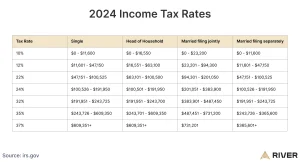Nonfungible tokens are revolutionizing the digital space. Their unique, proof-of-ownership assets have captured traders and collectors.
NFT transactions have seen an astounding 300% year-on-year surge, most commonly in relation to digital art but there have been whispers that they may someday replace physical goods, like shoes or event tickets.
What is an NFT?
NFTs (non-fungible tokens) are non-fungible tokens used to represent ownership in specific digital assets. While NFTs are frequently seen used within gaming worlds to track ownership of items within them and power economies, they can also serve other uses beyond gaming.
NFTs have become an increasingly popular form of investment due to their steadily appreciating value; an example being Larva Labs’ CryptoPunks project which has seen token sales for several hundred thousand dollars at various times since launch.
NFTs can also be fractionalized, enabling individuals to own shares rather than own the whole entity, creating new investment and collecting opportunities for investors and collectors alike. Furthermore, tokengated NFTs allow developers to limit access to things like gated content or private chat servers using NFTs – something increasingly seen with Metaverse-based ecommerce platforms.
What are NFTs used for?
NFTs give content creators new ways to earn from their creations. For instance, musicians who publish digital albums will earn royalties each time it sells from person-to-person through an NFT marketplace – automating royalty calculations ensures creators receive full value of their work.
NFTs also benefit from having publicly verifiable transaction and ownership records, enabling peer-to-peer trading without intermediaries who often take a cut of sales prices. They’re especially useful for digitizing tangible assets like art or real estate as well as creating digital content like video games.
Examples of non-financial assets (NFTs) include Art Blocks’ generative art pieces, virtual trading cards for video games, one-of-a-kind in-game items such as memes or domain names and even one-time payments like membership fees or unlocking benefits for their customers. Some companies even use NFTs to provide membership or unlock benefits for their customers.
How do NFTs work?
NFTs have opened up new opportunities for artists to generate revenue and broaden their audiences, revolutionizing the art world as some digital tokens have sold for millions.
NFTs differ from most forms of currency by being non-fungible – meaning each bill or coin can only ever be exchanged for another identical one – increasing both their value and appeal.
Blockchain records every transaction and token metadata, making it simple to prove ownership history and prevent criminals from stealing NFTs.
NFT supermarkets have seen an explosion of collectibles ranging from one-of-a-kind digital art pieces and virtual trading cards for video games to virtual real estate. NFTs have also become an effective way for brands to reward loyalty and membership – for instance an NFT version of a celebrity tweet could unlock exclusive content or rewards in video game and tokens act like virtual cards or stamps – providing brands with new ways of rewarding loyalty and membership.
What are the risks of NFTs?
As with any new technology, NFTs come with their own set of risks. Since they rely on blockchain, they may be vulnerable to hacking and theft; additionally, their value fluctuates considerably over time.
Another risk posed by NFTs is their potential classification as securities, thus necessitating compliance with the Howey test and increased regulation on their market.
NFTs require significant energy inputs during production, potentially having long-term negative repercussions for the environment.
NFTs tend to be limited edition or have an extremely limited supply, leading them to carry a higher price tag. Furthermore, being digital files, they could vanish if their server stops paying the bills – similar to how torrent files may vanish when interest in them diminishes.







More Stories
Your Financial Co-Pilot is Here: How AI is Reshaping Personal Finance
The Importance of Sector Rotation in Seasonal Investing
Understanding the Importance of Insurance Planning